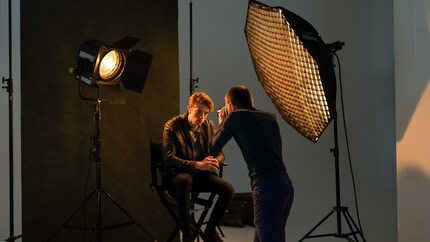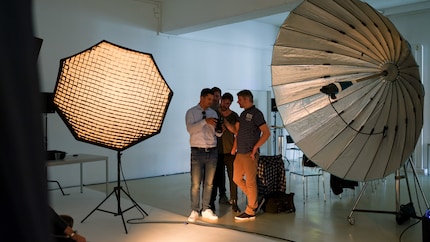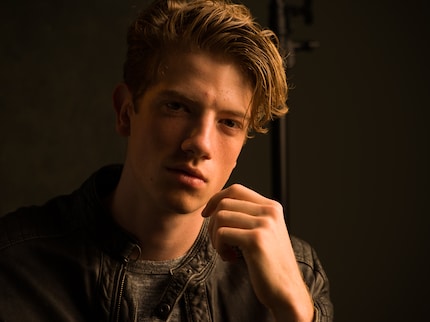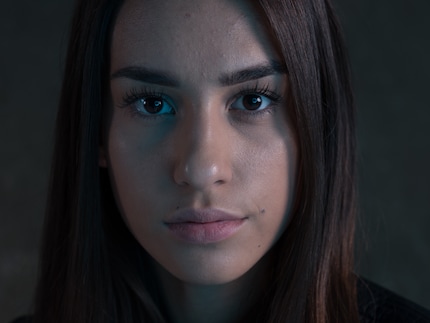
Product test
Tried out: the Fujifilm GFX 50s digital medium format camera
by David Lee

The medium format course was just the thing for anyone who wanted to draw on the full range of equipment: Hammer cameras, lenses à gogo and sinfully expensive studio equipment. All under the guidance of two professionals.
On Tuesday and Wednesday a week ago, digitec organised its first photography workshop in collaboration with Fujifilm and Hasselblad. The topic was medium format photography. The course lasted half a day and was held four times, twice in the morning and twice in the afternoon. I took part in the first of the four courses.

Two professional photographers, two models, two experts from the two camera manufacturers, a huge, well-equipped photo studio and lots of medium-format cameras and lenses: the overall outlay for this course was high, and participants got a lot for their 99 francs. Similar courses cost many times more elsewhere.
In all honesty, given the low price, I was a little worried that I would be treated to a marketing event where I would learn very little but would instead be told about the many advantages of these two extremely super cameras. Something like electric blanket sales car trips for senior citizens? Far from it. My scepticism was unfounded. The whole event was focussed on training and was far removed from a "permanent advertising programme". The two representatives of the manufacturers kept discreetly in the background and were mainly available to answer specific questions about camera operation. The theoretical introductory part could have been shorter for my taste. I was told that this was also shortened in the three subsequent courses.
I liked the practical part. The two photographers Andres Herren and Johannes Diboky clearly explained the structure of a lighting setup and also showed us ways in which we could vary the lighting. This was easy to understand for people without studio experience, but also offered interesting insights for old hands. The two found the right mix: on the one hand giving instructions and help, but on the other hand also letting the participants try things out.
From wide-angle to telephoto macro, all kinds of top lenses were available for both cameras. I had already tried out the Fujifilm camera before. I was familiar with it.
The Hasselblad camera was new to me. But the operating concept with the touchscreen makes it easy to get started. This cam is even handier than the Fujifilm GFX. In terms of size and weight, it would even be suitable for travelling (reportages and the like). But it would be too slow for me and I would worry about theft and damage.
Depending on previous knowledge and experience, many things were new at the same time: a new type of camera (in addition to the medium format, it was also new for some to work with a mirrorless system camera), the use of light shapers and studio flashes, and working with the models. They have to know what to do, and that means that you as a photographer have to know what you want. If you're nice, you also make sure that the model doesn't get roasted by the backlight. So the brain had to cope with quite a lot at the same time. But I thought that was good, that's how I learn the most. For me, operating the two cameras was the least of the problems. They are no more complicated to use than a professional SLR. In fact, they are easier. You just have to get used to two or three special features, such as the fact that they take a long time to save and have a shallower depth of field.
A professional shooting set-up is a huge effort. Not always, but often. We were only dealing with a light version of the reenacted original project, but even that was impressive. The Broncolor Para 222 reflector, for example, is bigger than a person and costs over 6000 francs. Without flash, of course.

An example of a light setting: a medium-sized light shaper from the side, a small light from behind (above), and a flash from a very large umbrella. This was covered with a coloured film, creating a strongly coloured light. It makes an extreme difference whether you have a light or dark background. Bright parts of the image become much more discoloured because they reflect the light. Practically nothing happens with black.


Small interventions such as a light or dark additional reflector have very strong effects.
In terms of the process, the location is chosen first, then the exact set-up and lighting are worked out, then there are test shots and only then do the models arrive (they should still be reasonably fresh when it really starts). However, a good photographer should also be able to adjust the setup spontaneously if they realise that it's not working as desired.
The images are transferred live to the computer on location. The customers are always present at the shoot and want to see something immediately, said the professional photographers. It is therefore also advisable to immediately add a profile to the RAW files, even if this is not yet the final one.
I already knew this, but I still find it impressive: with a 50-megapixel medium format, you can take a small section - it's still big enough for the screen resolution on a website like this one.

And finally, a small but important detail about the settings. System cameras can display the viewfinder image live as it appears with the current camera settings. You can then see immediately if you are underexposing, for example. However, if you are employing a flash, you must deactivate this function. Otherwise, the viewfinder image will show you the exposure without flash and therefore an almost black rectangle. If the function is deactivated, the viewfinder image is brightened so that you can see something.
My interest in IT and writing landed me in tech journalism early on (2000). I want to know how we can use technology without being used. Outside of the office, I’m a keen musician who makes up for lacking talent with excessive enthusiasm.